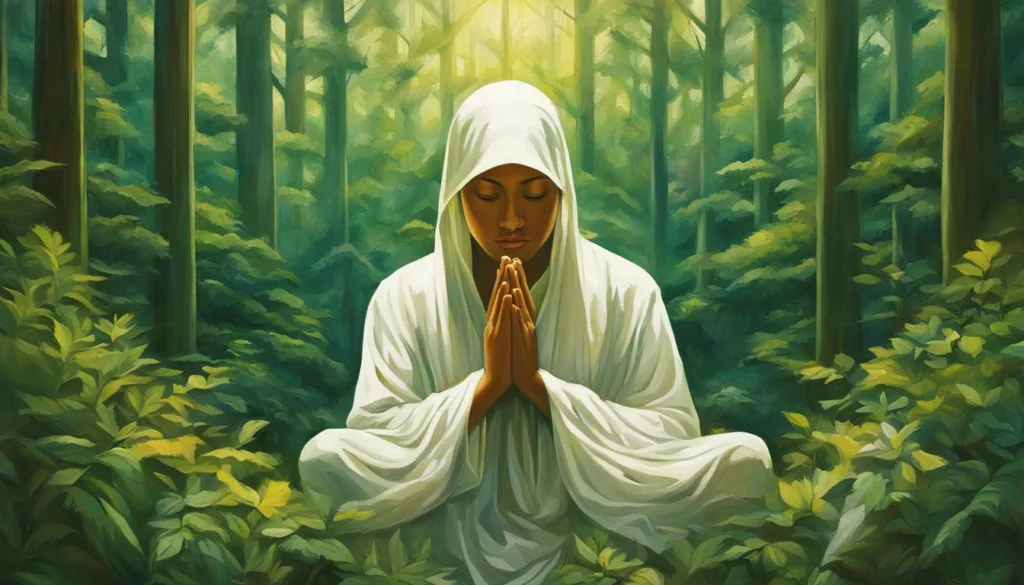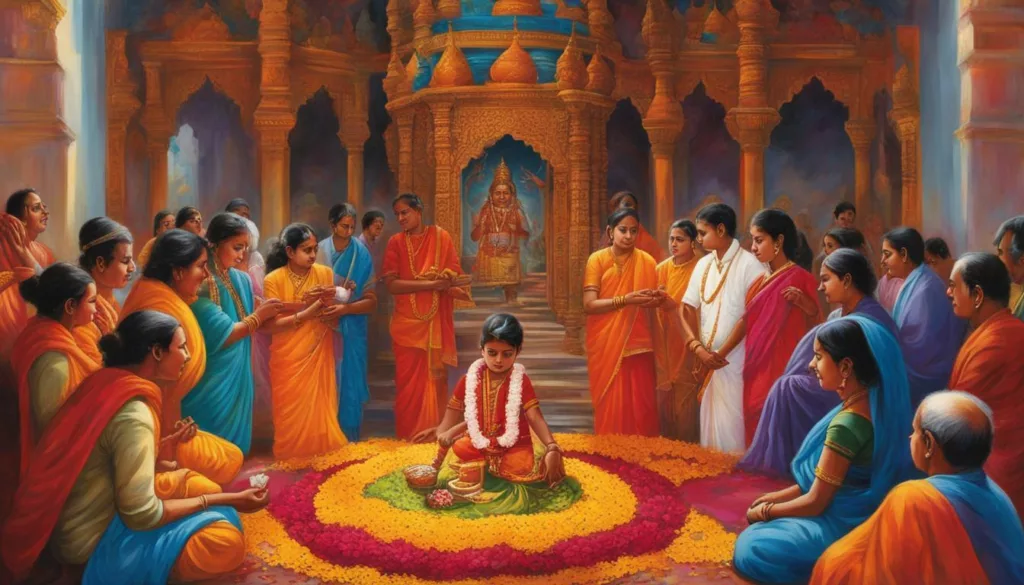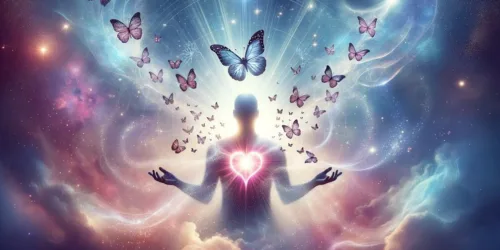Understanding the Four Stages of Life in Hinduism
Hinduism offers a profound understanding of the four stages of life, known as ashramas, which provide a roadmap for spiritual growth and self-realization. These stages, Brahmacharya, Grihastha, Vanaprastha, and Sannyasa, hold great significance in the Hindu religion, guiding individuals through different phases of life with specific responsibilities and goals.
During the Brahmacharya stage, one embraces education and prepares for their future life. This stage emphasizes discipline, learning, and acquiring knowledge to lay a strong foundation for personal and professional growth.
In the Grihastha stage, individuals enter the householder phase, embracing marriage and taking on responsibilities as they build their own families and earn a living. This stage highlights the importance of fulfilling one’s duties and maintaining a harmonious family life.
The Vanaprastha stage marks the transition into withdrawal from worldly life. Devotion to prayer and contemplation take center stage as individuals focus on spiritual growth and self-realization during their retirement years.
The final stage, Sannyasa, is a stage of renunciation and liberation. Individuals detach themselves from worldly attachments, dedicating their lives to the pursuit of moksha, the ultimate liberation from the cycle of birth and death.
- The four stages of life in Hinduism, known as ashramas, are Brahmacharya, Grihastha, Vanaprastha, and Sannyasa.
- Each stage has its own purpose and responsibilities, guiding individuals through different phases of life.
- Brahmacharya focuses on education and preparation, Grihastha emphasizes marriage and responsibilities, Vanaprastha emphasizes withdrawal and devotion, and Sannyasa highlights renunciation and liberation.
- The four stages provide a framework for spiritual growth and the pursuit of self-realization.
- While these stages are considered ideals, the actual practice and relevance may vary in modern Hinduism.
The Brahmacharya Stage: Embracing Education and Preparation
The Brahmacharya stage in Hinduism is a crucial period of education and preparation, focusing on individual growth and acquiring knowledge. It is the first of the four stages of life, known as ashramas, and is traditionally undertaken during youth. During this stage, individuals are expected to devote themselves to learning, self-discipline, and the development of character.
As a Brahmachari, you embark on a journey of self-discovery and intellectual exploration. Education plays a central role in this stage, with a strong emphasis on acquiring knowledge from a guru or spiritual teacher. You strive to understand the scriptures, master various subjects, and cultivate virtues such as self-control and humility.
This stage also involves observing strict celibacy, detachment from material possessions, and adherence to moral principles. It serves as a foundation for the subsequent stages of life, enabling you to fulfill your duties and responsibilities with clarity and wisdom.

During this period, you learn valuable life skills, develop a strong moral compass, and cultivate a sense of discipline. The Brahmacharya stage equips you with the knowledge and qualities necessary to lead a fulfilling life as a responsible member of society. It prepares you for the challenges that lie ahead, enabling you to make informed decisions and contribute positively to your family, community, and the world.
The Grihastha Stage: Embracing Marriage and Responsibilities
In the Grihastha stage of life in Hinduism, individuals embrace the responsibilities of marriage, family life, and societal obligations. This stage is seen as a crucial part of one’s journey towards spiritual growth and self-realization. It is during this stage that individuals fulfill their duties towards their spouse, children, and the wider community.
Marriage is considered a sacred bond in Hinduism, and the Grihastha stage is centered around building a harmonious family life. Individuals in this stage are expected to fulfill their roles as husbands or wives, parents, and contributing members of society. They are responsible for providing for their family’s financial needs and ensuring their emotional well-being.
The Grihastha stage is also a time for individuals to practice dharma, or righteous duty. This involves upholding moral values, maintaining integrity, and fulfilling responsibilities towards family, society, and the divine. By embracing these duties, individuals in the Grihastha stage can cultivate qualities such as patience, compassion, and selflessness, which are essential for their spiritual growth.

| Responsibilities in the Grihastha Stage: | Benefits and Significance: |
|---|---|
| Fulfilling the duties of marriage and family life. | Building strong relationships and fostering love and harmony within the family. |
| Providing financial support and stability for the family. | Ensuring the well-being and security of family members. |
| Contributing to society through professional work or community service. | Creating a positive impact on the wider community and promoting societal harmony. |
The Grihastha stage is a significant phase of life in Hinduism, where individuals navigate the complexities of marriage, parenthood, and societal responsibilities. It offers opportunities for personal growth, character development, and the cultivation of virtues that contribute to a fulfilling and meaningful life.
The Vanaprastha Stage: Embracing Withdrawal and Devotion
The Vanaprastha stage in Hinduism marks a time of withdrawal from worldly affairs and a deepening focus on spiritual devotion and contemplation. It is the third stage of life, following Brahmacharya (student stage) and Grihastha (householder stage). Vanaprastha is a period of transition where individuals gradually detach themselves from their material possessions and social obligations.
During this stage, individuals typically retreat to a quiet place, such as a forest, to engage in meditation, self-reflection, and the pursuit of spiritual knowledge. They dedicate their time to prayer, reflection upon scriptures, and contemplation of the divine. The solitude and simplicity of the Vanaprastha stage allow individuals to detach from worldly distractions and focus on their spiritual growth.
According to Hindu religious beliefs and the stages of life in Vedic tradition, the Vanaprastha stage is about preparing oneself for the final stage of life, Sannyasa. It is a time for individuals to detach from their desires and attachments, cultivating a sense of detachment and renunciation. By withdrawing from worldly affairs, individuals can deepen their devotion to God and seek liberation from the cycle of birth and death.

| Key Points | Details |
|---|---|
| Stage Name | Vanaprastha |
| Focus | Withdrawal from worldly affairs, spiritual devotion, and contemplation |
| Main Activities | Meditation, prayer, self-reflection, study of scriptures, detachment from desires and attachments |
| Goal | To deepen spiritual growth and prepare for the final stage of life, Sannyasa |
The Vanaprastha stage plays a significant role in the journey towards self-realization and liberation in Hinduism. It allows individuals to detach themselves from the material world and focus on their inner spiritual journey. By embracing withdrawal and devotion, followers of Hinduism believe they can attain a deeper connection with the divine and ultimately achieve moksha.
The Sannyasa Stage: Embracing Renunciation and Liberation
The Sannyasa stage in Hinduism represents the culmination of spiritual growth, where individuals renounce all attachments and dedicate themselves to the pursuit of liberation, or moksha. This stage is characterized by a complete detachment from worldly desires and a focus on self-realization. Sannyasins, or wandering ascetics, live a life of simplicity and austerity, solely devoted to spiritual practices and the realization of their true nature.
During the Sannyasa stage, individuals relinquish all social roles and responsibilities, including family ties and material possessions. They embrace a life of renunciation, wandering from place to place, and relying on the kindness of others for their basic needs. In this pursuit of liberation, Sannyasins detach themselves from the cycle of birth and death, seeking union with the divine and ultimate liberation.

The Sannyasa stage is often viewed as the pinnacle of spiritual growth in Hindu philosophy. It represents the culmination of the previous three stages and serves as a pathway to attain moksha, the liberation from the continuous cycle of reincarnation. Sannyasins devote themselves entirely to spiritual practices such as meditation, contemplation, and self-discipline.
While the Sannyasa stage is considered a sacred and revered path in Hinduism, it is important to note that it is not commonly practiced in modern times. The demands and complexities of contemporary life have led to a decline in individuals pursuing the Sannyasa ashrama. Nevertheless, the ideals and teachings associated with this stage continue to inspire and guide spiritual seekers on their journey towards self-realization and liberation.
The Modern Practice of the Four Stages of Life in Hinduism
While the four stages of life in Hinduism, or ashramas, are considered ideals, their practice has evolved in modern times to adapt to changing societal norms and circumstances. In the past, individuals would strictly follow the prescribed order of the ashramas, progressing from one stage to another as they aged. However, in today’s society, many Hindus find themselves modifying the traditional ashrama system to suit their needs and aspirations.
With the influence of globalization and the modernization of lifestyles, the emphasis on adhering to a specific sequence of stages has diminished. It is now common to see individuals embracing multiple roles simultaneously or skipping certain stages altogether. For example, some individuals may choose to focus on their education and career before entering into marriage, while others may prioritize spiritual practices and choose to live a renounced life from an early age.
This adaptation of the ashrama system allows individuals to navigate the challenges and opportunities of contemporary life while still honoring the underlying philosophical principles. It highlights the fluidity and diversity of Hinduism, as practitioners find ways to live meaningful lives while adhering to the core values and teachings of the religion.

Table: Comparison of Traditional and Modern Practices of the Ashramas in Hinduism
| Traditional Ashramas | Modern Practices |
|---|---|
| Brahmacharya: Education and Preparation | Focus on education and career development before marriage |
| Grihastha: Marriage and Responsibilities | Marriage and family life while prioritizing personal and professional goals |
| Vanaprastha: Withdrawal and Devotion | Emphasis on spiritual practices and contemplation in retirement |
| Sannyasa: Renunciation and Liberation | Pursuit of spiritual liberation while maintaining active involvement in society |
As Hinduism continues to evolve in the modern world, the ashrama system remains a guiding framework for individuals seeking spiritual growth and self-realization. Whether adhering strictly to the traditional sequence or adapting it to suit personal circumstances, the four stages of life in Hinduism continue to serve as a roadmap for navigating the complexities of existence and finding meaning and fulfillment in today’s society.
The Significance of Dharma in Each Stage
Dharma, the moral and ethical duties prescribed by Hinduism, guides individuals in each stage of life, determining their responsibilities and actions. It is believed that following dharma leads to spiritual growth and the attainment of moksha, or liberation from the cycle of birth and death. In the context of the four stages of life in Hinduism, dharma plays a crucial role in shaping one’s journey towards self-realization.
Throughout the stages of Brahmacharya, Grihastha, Vanaprastha, and Sannyasa, individuals are expected to adhere to their specific dharma, which varies according to their roles and responsibilities in society.
“Dharma sustains the earth and the heavens, it upholds all beings and controls everything.” – Vishnu Purana
The Role of Dharma in Each Stage
In the Brahmacharya stage, dharma emphasizes acquiring knowledge and skills through education and discipline. This includes studying sacred texts, learning from gurus, and practicing self-restraint. By following their dharma, individuals in this stage lay a strong foundation for their future lives as Grihasthas.
As Grihasthas, individuals fulfill their dharma by getting married, raising a family, and earning a living. The dharma of a Grihastha involves taking care of one’s spouse, children, and aging parents, as well as contributing to society through ethical and productive work.
In the Vanaprastha stage, individuals embrace a life of withdrawal and devote their time to contemplation and spiritual practices. They detach themselves from material possessions and focus on deepening their connection with the divine. By following their dharma, individuals in this stage prepare themselves for the final stage of Sannyasa.
- Dharma in the Four Stages of Life
- 1. Brahmacharya: Acquiring knowledge and skills through education and discipline
- 2. Grihastha: Fulfilling family and societal responsibilities
- 3. Vanaprastha: Embracing withdrawal and devoting time to spiritual practices
- 4. Sannyasa: Renouncing all attachments and pursuing liberation
| Stage | Main Responsibilities and Actions |
|---|---|
| Brahmacharya | Acquire knowledge and skills through education and discipline |
| Grihastha | Get married, raise a family, and contribute to society |
| Vanaprastha | Withdraw from worldly life, focus on spiritual practices |
| Sannyasa | Renounce attachments, pursue liberation |
Lastly, the Sannyasa stage represents the culmination of an individual’s spiritual journey. Here, dharma is fulfilled by renouncing all attachments and dedicating oneself entirely to the pursuit of liberation. Sannyasins detach themselves from material desires and societal expectations, focusing solely on their spiritual growth and the realization of their true nature.
By observing dharma in each stage, individuals in Hinduism strive for spiritual growth, self-realization, and ultimately, liberation from the cycle of birth and death. It is through the understanding and practice of dharma that one can find purpose and alignment with the divine.

The Influence of Vedic Culture on the Stages of Life
The stages of life in Hinduism have their roots in the Vedic culture, which laid the foundation for the understanding and practice of these stages. Vedic culture, with its emphasis on dharma and spiritual growth, recognized the importance of different life phases and the corresponding duties and responsibilities. This ancient tradition shaped the concept of varnashrama dharma, which divided society into four varnas (castes) and four ashramas (stages of life). Each stage was associated with specific roles, obligations, and goals.
The first stage, Brahmacharya, was dedicated to education, discipline, and the acquisition of knowledge. During this stage, individuals focused on developing intellectual and moral virtues, preparing themselves for their future roles as householders and contributing members of society.
The second stage, Grihastha, centered around marriage, family life, and the pursuit of a livelihood. This was a time to fulfill one’s duties as a spouse, parent, and provider, while maintaining a balanced and righteous lifestyle. Grihastha dharma emphasized the importance of upholding societal and family values, fostering harmonious relationships, and contributing to the welfare of the community.
The third stage, Vanaprastha, marked the transition to a more contemplative and spiritually-focused phase of life. It involved gradual withdrawal from material pursuits and a shift towards self-reflection, meditation, and devotion. During this stage, individuals could detach from worldly attachments and deepen their connection with the divine.
The final stage, Sannyasa, represented complete renunciation and detachment from worldly life. Sannyasins devoted themselves entirely to spiritual pursuits, seeking enlightenment and liberation from the cycle of birth and death. They renounced material possessions and societal roles, choosing a life of simplicity, austerity, and devotion to the divine.
| Stages of Life | Associated Responsibilities | Key Goals |
|---|---|---|
| Brahmacharya | Education, discipline, preparation | Acquiring knowledge, moral development |
| Grihastha | Marriage, household responsibilities, earning a living | Fulfilling duties, maintaining family harmony |
| Vanaprastha | Withdrawal, devotion, contemplation | Self-reflection, spiritual growth |
| Sannyasa | Renunciation, detachment, devotion | Seeking liberation, attaining moksha |

“The stages of life in Hinduism, influenced by Vedic culture, provide individuals with a structured framework for personal and spiritual development. Each stage has its own significance and purpose, guiding individuals through different life phases while emphasizing the importance of righteousness, duty, and spiritual growth.”
While these stages served as an ideal model for spiritual growth and self-realization in the past, it is important to note that their practical implementation has evolved in modern times. Many Hindus today adapt the stages to fit their own circumstances and societal changes. The emphasis on education, marriage, and subsequent responsibilities remains, but the specific practices and expectations may vary.
So, while the stages of life in Hinduism continue to be respected and studied, their manifestation in modern society reflects the evolving nature of Hindu religious beliefs and cultural practices.
The Philosophy behind the Hindu Stages of Life
The stages of life in Hinduism are deeply rooted in the philosophical underpinnings of the religion, reflecting the journey towards self-realization and liberation. Hindu philosophy teaches that human life is a precious opportunity to attain spiritual growth and ultimately break free from the cycle of birth and death. The four ashramas, or stages of life, provide a framework for individuals to navigate this journey, each stage offering unique responsibilities and opportunities for personal development.
In the first stage, Brahmacharya, individuals focus on education, discipline, and preparation for their future roles in society. This stage emphasizes the importance of acquiring knowledge and skills necessary for a fulfilling life. It is during this time that individuals learn about their dharma, or righteous duty, and lay the foundation for their future responsibilities.
The second stage, Grihastha, is characterized by marriage, raising a family, and actively participating in the community. This stage emphasizes the fulfillment of worldly duties and responsibilities, such as earning a living and maintaining a harmonious family life. Grihastha stage allows individuals to cultivate material wealth, fulfill social obligations, and contribute to the overall well-being of society.
The third stage, Vanaprastha, marks a time of withdrawal from worldly attachments. It is a period dedicated to contemplation, spiritual practices, and devotion to prayer. By detaching from material desires and responsibilities, individuals can focus on their inner journey, seeking self-realization and deepening their connection with the divine.
The fourth and final stage, Sannyasa, is the stage of renunciation and complete detachment from worldly pursuits. At this stage, individuals relinquish all attachments and desires, dedicating themselves solely to the pursuit of moksha, or liberation. Sannyasa is characterized by a wandering, ascetic lifestyle, where individuals focus on spiritual practices, study and contemplation, and seek to merge their individual consciousness with the universal consciousness.

It is important to note that while the four stages of life in Hinduism are considered ideals, they are not commonly practiced in their traditional form in modern times. Hindu society has evolved, and individuals now have the freedom to choose the path that aligns with their personal beliefs and circumstances. However, the philosophical principles behind these stages, emphasizing education, family, spirituality, and liberation, continue to guide individuals on their spiritual journeys and provide a framework for leading a purposeful and meaningful life.
The Life Cycle in Hinduism: From Birth to Death
The stages of life in Hinduism form an integral part of the broader life cycle, encompassing birth, marriage, and ultimately, death. From the moment a person is born, they embark on a spiritual journey through these stages, guided by the principles of dharma, or righteous duty. Each stage carries its own significance and responsibilities, contributing to one’s personal growth and societal harmony.
Throughout their life, a Hindu individual progresses through the four ashramas, starting with Brahmacharya, the student stage. Here, the emphasis is on education, discipline, and the acquisition of knowledge. It is a time of preparation for future responsibilities and the development of a strong moral foundation.
Following Brahmacharya comes the Grihastha stage, the time for marriage and fulfilling one’s duties as a householder. This stage involves raising a family, earning a living, and actively contributing to society. It is a period of selflessness, where one’s focus is on maintaining a harmonious family life and upholding their dharma.
As one grows older, they transition into the Vanaprastha stage, characterized by withdrawal from worldly life. This stage is marked by a shift in focus towards contemplation, devotion, and spiritual growth. It is a time for self-reflection and preparing for the final stage of life, Sannyasa.
The Sannyasa stage represents the pinnacle of spiritual attainment and renunciation. In this final stage, individuals detach themselves from all worldly attachments and dedicate their lives solely to the pursuit of moksha, liberation from the cycle of birth and death. It is a state of complete surrender to divine consciousness, where one seeks enlightenment and union with the divine.
The life cycle in Hinduism is a profound journey guided by the principles of dharma, self-realization, and the pursuit of liberation. It encompasses the four stages of life, each vital in its own way. By understanding and embracing these stages, individuals can navigate their spiritual path, experience personal growth, and contribute positively to their families and communities.

To summarize, the stages of life in Hinduism are:
- Brahmacharya: The student stage focused on education and preparation for future life.
- Grihastha: The householder stage where individuals marry, raise families, and fulfill their duties.
- Vanaprastha: The hermit stage characterized by withdrawal from worldly life and devotion to prayer.
- Sannyasa: The renunciation stage, where individuals detach from all attachments and pursue liberation.
These stages are not static or rigidly followed in modern Hinduism. However, they provide a roadmap for individuals to lead a balanced and purposeful life, aligned with the principles of dharma. By understanding the life cycle in Hinduism, one can embark on a meaningful spiritual journey and strive towards the ultimate goal of self-realization and liberation.
| Stages of Life | Main Focus | Responsibilities |
|---|---|---|
| Brahmacharya | Education and preparation | Acquiring knowledge, discipline |
| Grihastha | Marriage and family life | Raising a family, earning a living, fulfilling duties |
| Vanaprastha | Withdrawal and devotion | Contemplation, devotion to prayer, spiritual growth |
| Sannyasa | Renunciation and liberation | Detachment from attachments, pursuit of moksha |
The Cultural Significance of Hindu Stages of Life
The stages of life in Hinduism not only hold religious significance but also shape the cultural fabric of Hindu society, governing social roles and relationships. The four ashramas, or stages, Brahmacharya, Grihastha, Vanaprastha, and Sannyasa, provide a framework for individuals to fulfill their duties and attain spiritual growth.
In the Grihastha stage, which focuses on marriage and responsibilities, Hindu culture places great importance on the institution of marriage and the role of the householder in society. It is during this stage that individuals are expected to establish a family, raise children, and contribute to the welfare of the community. This cultural emphasis on family and community strengthens the social bonds and fosters a sense of belonging.
The Vanaprastha stage, characterized by withdrawal from worldly life, encourages individuals to dedicate their time to spiritual practices and contemplation. This stage highlights the cultural value of introspection and inner growth, guiding individuals towards self-realization and a deeper understanding of the divine. It emphasizes the importance of detachment from material possessions and the pursuit of higher truths.
The Sannyasa stage, the final stage of renunciation and liberation, holds great significance in Hindu culture. Individuals who choose this stage are revered as spiritual seekers who have transcended worldly attachments. They are seen as living embodiments of wisdom and enlightenment, inspiring others to seek liberation and attain moksha. This cultural reverence for the Sannyasa stage fosters a deep appreciation for renunciation and the pursuit of spiritual liberation.
The cultural significance of the Hindu stages of life is rooted in the belief that each stage serves a specific purpose in an individual’s spiritual journey. These stages not only shape the religious practices and beliefs of Hindus but also influence their societal roles, family dynamics, and community interactions. By understanding and honoring these stages, Hindu society celebrates the diversity of human experience and seeks to create a harmonious balance between spiritual growth and worldly responsibilities.
Table: Cultural Significance of Hindu Stages of Life
| Ashrama | Cultural Significance |
|---|---|
| Brahmacharya | Emphasizes the value of education, discipline, and preparedness for future roles in society. |
| Grihastha | Highlights the importance of family, community, and fulfilling one’s worldly responsibilities. |
| Vanaprastha | Encourages introspection, withdrawal from material pursuits, and dedication to spiritual practices. |
| Sannyasa | Reveres renunciation, detachment from worldly attachments, and the pursuit of spiritual liberation. |
“The stages of life in Hinduism not only guide individuals on their spiritual journey but also shape the cultural values and practices of the Hindu community. Each stage holds its own significance in fostering personal growth, fulfilling societal responsibilities, and seeking spiritual liberation. By embracing and understanding these stages, Hindus strive to lead meaningful lives and contribute to the overall harmony of society.”

“The cultural significance of the Hindu stages of life reflects the deep-rooted beliefs and values of Hindu society. It underscores the importance of education, family, spiritual practices, and liberation from worldly attachments. These stages provide a roadmap for individuals to navigate their personal and spiritual growth, while also contributing to the cultural fabric of Hinduism.”
Conclusion
The four stages of life in Hinduism, from Brahmacharya to Sannyasa, offer profound insights into the journey of self-realization and the pursuit of liberation within the rich tapestry of Hindu philosophy and culture.
In Brahmacharya, the focus lies on education and preparation, instilling discipline and knowledge in the pursuit of future endeavors. Grihastha emphasizes the importance of marriage and fulfilling one’s duties as a responsible householder. Vanaprastha, a stage of withdrawal, encourages individuals to devote themselves to prayer and contemplation, while Sannyasa allows for the renunciation of all attachments in the pursuit of moksha.
While these stages provide a roadmap for spiritual growth and self-realization, it is important to note that they are not commonly practiced in modern Hinduism. The dynamic nature of society has led to adaptations and changes in the way individuals approach and navigate these stages in their lives.
Nevertheless, the significance of dharma, or righteous duty, remains a core principle in each of these stages. It is through the fulfillment of one’s dharma that individuals can achieve spiritual growth, maintain societal harmony, and ultimately strive towards liberation.
The four stages of life in Hinduism, influenced by Vedic culture and aligned with the pursuit of self-realization, form an integral part of Hindu religious beliefs. They provide a holistic perspective on the life cycle, from birth to death, and have had a profound impact on the cultural norms, family structures, and community relationships within Hindu society.
By understanding and appreciating the philosophy behind these stages, one can gain a deeper insight into the essence of Hinduism and the timeless wisdom it offers for leading a meaningful and fulfilling life.
FAQ
Q: What are the four stages of life in Hinduism?
A: The four stages of life in Hinduism are Brahmacharya (student stage), Grihastha (householder stage), Vanaprastha (hermit stage), and Sannyasa (wandering ascetic stage).
Q: What is the purpose of the Brahmacharya stage?
A: The Brahmacharya stage focuses on education and preparation for future life.
Q: What does the Grihastha stage involve?
A: The Grihastha stage involves marriage and earning a living.
Q: What is the Vanaprastha stage about?
A: The Vanaprastha stage is about withdrawal from worldly life and devotion to prayer.
Q: What is the Sannyasa stage?
A: The Sannyasa stage is a renunciation of all attachments and a focus on attaining moksha, or liberation from the cycle of birth and death.
Q: Are the four stages commonly practiced in modern Hinduism?
A: No, the four stages are considered ideals but are not commonly practiced in modern Hinduism.
Q: How important is fulfilling dharma in each stage?
A: Fulfilling dharma, or righteous duty, is important in each stage of life in Hinduism as it contributes to spiritual growth and societal harmony.
Q: How have the four stages been influenced by Vedic culture?
A: The four stages have been influenced by Vedic culture through ancient texts and traditions, shaping the understanding of these stages in Hindu religious beliefs.
Q: What is the philosophy behind the Hindu stages of life?
A: The philosophy behind the Hindu stages of life aligns with the pursuit of self-realization, the concept of dharma, and the ultimate goal of attaining moksha.
Q: How do the stages of life in Hinduism connect to the overall life cycle?
A: The stages of life in Hinduism are connected to the overall life cycle, including birth, marriage, and death, emphasizing the cyclical nature of life in Hindu religious beliefs.
Q: What is the cultural significance of the Hindu stages of life?
A: The Hindu stages of life have cultural significance, influencing societal norms, family structures, and community relationships within Hindu culture.






